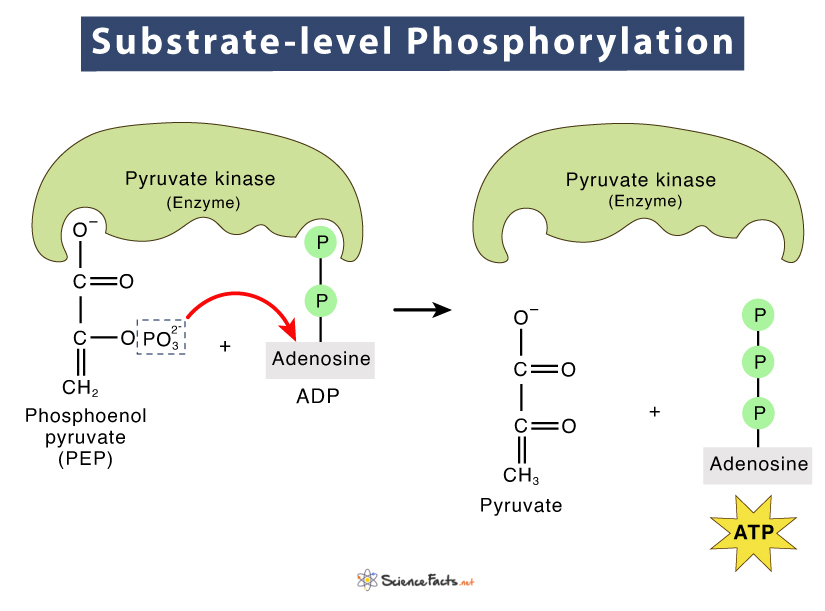When and Where Does Substrate-level Phosphorylation Occur
Substrate-level Phosphorylation in Glycolysis
Substrate-level Phosphorylation in Krebs Cycle (Citric Acid Cycle)
Importance of Substrate-level Phosphorylation
Step 1: First, a phosphoryl group gets transferred from 1, 3-bisphosphoglycerate to ADP, forming 3-phosphoglycerate (3PG) and ATP. This step is catalyzed by phosphoglycerate kinase (PGK), giving off 2 ATPs. 2 (1,3-bisphosphoglycerate) + 2 ADP → 2 (3-phosphoglycerate) + 2 ATP Step 2: Second, a phosphoryl group is transferred from two phosphoenolpyruvate (PEP) molecules to ADP, forming two pyruvate molecules and ATPs. The enzyme pyruvate kinase catalyzes the reaction. 2 (Phosphoenolpyruvate) + 2 ADP → 2 Pyruvate + 2 ATP Thus, in glycolysis, 4 ATPs are produced from 1 molecule of glucose. A phosphoryl group is transferred from succinyl-CoA to GDP, forming succinate and GTP. This step is catalyzed by the enzyme succinyl-CoA synthetase, producing 2 ATPs per glucose molecule (since the cycle runs twice and two pyruvate molecules enter the Krebs cycle).
2 Succinyl-CoA + 2 GDP → 2 Succinate +2 GTP
